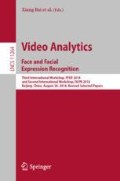Abstract
Deploying a neural network model on a low-power embedded platform is a challenging task. In this paper, we present our study on the efficacy of aggregated residual transformation (defined in ResNeXt that secured 2nd place in the ILSVRC 2016 classification task) for lightweight deep networks. The major contributions to this paper include (i) evaluation of group convolution, (ii) study on the impact of skip connection and various width for lightweight deep network. Our extensive experiments on different topologies show that employing aggregated convolution operation followed by point-wise convolution degrades the accuracy significantly. Furthermore as per our study, skip connections are not a suitable candidate for smaller networks and width is an important attribute to magnify the accuracy. Our embedded friendly networks are tested on ImageNet 2012 dataset where 3D convolution is a better alternative to aggregated convolution because of the 10% improvement in classification accuracy.
Access this chapter
Tax calculation will be finalised at checkout
Purchases are for personal use only
References
Briot, A., AI, G., Creteil, V., Viswanath, P., Yogamani, S.: Analysis of efficient cnn design techniques for semantic segmentation. In: Proceedings of the IEEE Conference on Computer Vision and Pattern Recognition Workshops, pp. 663–672 (2018)
Iandola, F.N., Keutzer, K.: Keynote: small neural nets are beautiful: enabling embedded systems with small deep-neural-network architectures. CoRR abs/1710.02759 (2017)
Canziani, A., Paszke, A., Culurciello, E.: An analysis of deep neural network models for practical applications. CoRR abs/1605.07678 (2016)
Huang, J., et al.: Speed/accuracy trade-offs for modern convolutional object detectors. CoRR abs/1611.10012 (2016)
LeCun, Y., et al.: Backpropagation applied to handwritten zip code recognition. Neural Comput. 1(4), 541–551 (1989)
Lowe, D.G.: Distinctive image features from scale-invariant keypoints. Int. J. Comput. Vis. 60(2), 91–110 (2004)
Dalal, N., Triggs, B.: Histograms of oriented gradients for human detection. In: Proceedings of the 2005 IEEE Computer Society Conference on Computer Vision and Pattern Recognition, CVPR 2005 (2005)
Krizhevsky, A., Sutskever, I., Hinton, G.E.: ImageNet classification with deep convolutional neural networks. In: 25th International Conference on Neural Information Processing Systems, USA (2012)
Lin, M., Chen, Q., Yan, S.: Network in network. CoRR (2013)
Simonyan, K., Zisserman, A.: Very deep convolutional networks for large-scale image recognition. CoRR (2014)
He, K., Zhang, X., Ren, S., Sun, J.: Deep residual learning for image recognition. In: 2016 IEEE Conference on Computer Vision and Pattern Recognition (CVPR), pp. 770–778 (2016)
Xie, S., Girshick, R.B., Dollár, P., Tu, Z., He, K.: Aggregated residual transformations for deep neural networks. CoRR abs/1611.05431 (2016)
Szegedy, C., Ioffe, S., Vanhoucke, V.: Inception-v4, inception-ResNet and the impact of residual connections on learning. CoRR (2016)
Iandola, F.N., Moskewicz, M.W., Ashraf, K., Han, S., Dally, W.J., Keutzer, K.: SqueezeNet: AlexNet-level accuracy with 50x fewer parameters and \(<\)1mb model size. CoRR (2016)
Zhang, X., Zhou, X., Lin, M., Sun, J.: ShuffleNet: an extremely efficient convolutional neural network for mobile devices. CoRR (2017)
Jia, Y., et al.: Caffe: convolutional architecture for fast feature embedding. In: Proceedings of the 22nd ACM International Conference on Multimedia, MM 2014, pp. 675–678 (2014)
Ioffe, S., Szegedy, C.: Batch normalization: accelerating deep network training by reducing internal covariate shift, pp. 448–456 (2015)
Kingma, D.P., Ba, J.: Adam: a method for stochastic optimization. CoRR abs/1412.6980 (2014)
He, K., Zhang, X., Ren, S., Sun, J.: Delving deep into rectifiers: surpassing human-level performance on ImageNet classification. In: Proceedings of the 2015 IEEE International Conference on Computer Vision (ICCV) (2015)
Srivastava, N., Hinton, G., Krizhevsky, A., Sutskever, I., Salakhutdinov, R.: Dropout: a simple way to prevent neural networks from overfitting. J. Mach. Learn. Res.
Roy, S., Das, N., Kundu, M., Nasipuri, M.: Handwritten isolated Bangla compound character recognition: a new benchmark using a novel deep learning approach. Pattern Recognition Lett. 90, 15–21 (2017)
Roy, S., Das, A., Bhattacharya, U.: Generalized stacking of layerwise-trained deep convolutional neural networks for document image classification. In: 23rd International Conference on Pattern Recognition, ICPR 2016 (2016)
Author information
Authors and Affiliations
Corresponding author
Editor information
Editors and Affiliations
Rights and permissions
Copyright information
© 2019 Springer Nature Switzerland AG
About this paper
Cite this paper
Das, A., Boulay, T., Yogamani, S., Ou, S. (2019). Evaluation of Group Convolution in Lightweight Deep Networks for Object Classification. In: Bai, X., et al. Video Analytics. Face and Facial Expression Recognition. FFER DLPR 2018 2018. Lecture Notes in Computer Science(), vol 11264. Springer, Cham. https://doi.org/10.1007/978-3-030-12177-8_5
Download citation
DOI: https://doi.org/10.1007/978-3-030-12177-8_5
Published:
Publisher Name: Springer, Cham
Print ISBN: 978-3-030-12176-1
Online ISBN: 978-3-030-12177-8
eBook Packages: Computer ScienceComputer Science (R0)

